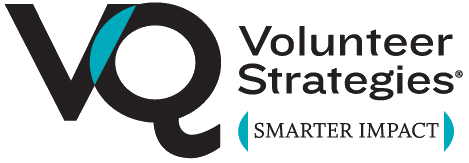Blog: Avoiding Conflict: It’s All about Expectations

As I prepare to deliver a training today on navigating sticky situations with volunteers for a statewide network of food banks, I am reminded once again of my favorite statement about conflict:
Conflict occurs when we demand and expect others to behave in a way that is not natural or known.
(Monica Wofford, Make Difficult People Disappear)
While most of us prefer to avoid conflict – despite knowing that avoidance usually not only postpones the inevitable but also exacerbates it – this statement demystifies conflict. If conflict occurs when we expect others to behave in ways that aren’t known to them, then de-escalating conflict may be as simple as closing the gap between our mutual expectations. Better yet, by ensuring that expectations are clear, documented, and agreed upon early on we can mitigate or entirely avoid conflict down the road.
Before any work begins, volunteers and staff should clearly define and agree upon expectations. Expectations include the goals of the work, who is responsible for what, and how everyone involved will communicate. This is one of the many reasons why I am such a strong believer in position descriptions. That’s the first opportunity to clearly articulate the expectations for the volunteer – and to assess whether the role is, in fact, realistic. I often consider this the first vital reality check. If a position description reveals that the role is appropriate for one person and that the desired qualifications are realistic, then the first steps in establishing expectations and avoiding conflict are complete.
The next step is reviewing these with the prospective – and eventually the placed – volunteer. For a skilled, high-impact volunteer role, questions such as those below can be addressed in your first meetings together. For volunteers who are part of a large direct-service effort or a short-term assignment, this information is still vital to communicate and can be shared during orientation or onboarding. In either case, it’s vital to address all of these. These are also available as a downloadable tool in the Training Section of our Tools and Templates page (see Defining Expectations).
- Set Priorities. What are the priorities for this position?
- Clarify responsibilities. Who has responsibility for which results? Who is the key staff contact person or volunteer leader?
- Define levels of authority. What level of authority do the volunteers have? Which questions can they answer on their own and which issues require a check-in with leadership?
- Agree on time commitment and timeline. Which aspects of the work need to be completed first? Which components are contingent upon other results? What is the overall timeline for completion?
- Identify the available resources. What resources will be dedicated to the position? What additional resources might be needed for the volunteer to be successful?
- Define checkpoints. What are your checkpoints for progress review? How will you communicate with each other (e.g., email, phone, in-person meetings)?
- Discuss how to evaluate the assignment. What will you assess during the project and what will be evaluated upon completion? Who else needs to know the results?
Taking the time to establish expectations now sets everyone up for success. If conflicts arise later, the conversation will be much easier if you can refer back to expectations and determine where problems have arisen and how to close that gap between each person’s expectations. Perhaps the volunteer expected access to certain resources and is now frustrated with her inability to move forward without that information. Perhaps you expected more frequent updates via email and the volunteer expected you to be coming around and touching base in person. Referring back to your agreements around checkpoints is a vital starting point and you can document new agreements around how you will work together moving forward.
